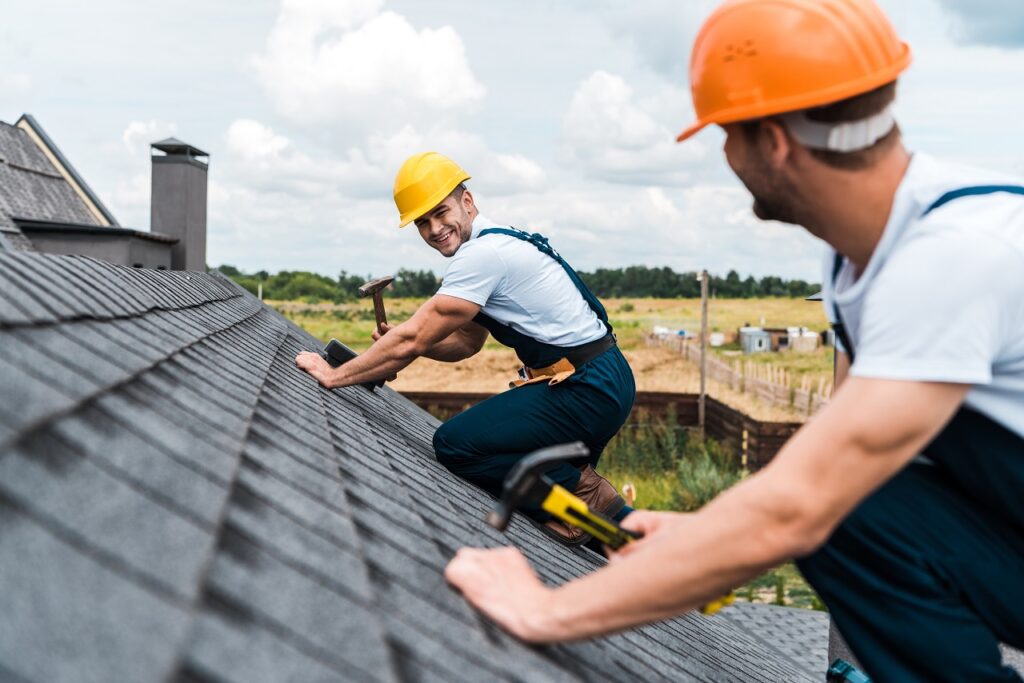As a homeowner, experiencing a roofing emergency can be both stressful and overwhelming. Whether caused by storms, strong winds, hail damage, or even accidental impacts, dealing with a compromised roof can be challenging. The safety and comfort of your family and the structural integrity of your home are paramount, making emergency roof repair a top priority. Understanding the critical steps to take when your roof requires urgent attention can help mitigate the damage and protect your property.
As residential reroofing and repair specialists, our expertise in addressing emergency roof repair scenarios ensures your home receives the prompt and appropriate care it needs. In this article, we will guide you through the essential steps to take during an emergency roof repair situation, help you identify and navigate issues such as roof leaks, storm, wind, and hail damage, and provide valuable insights into selecting the right roofing contractor for your needs.
Experiencing an emergency roof repair situation often results in unexpected financial and structural setbacks. It is important for homeowners to act promptly and accurately to minimize any potential damages. Equally crucial is enlisting the aid of a reliable and professional roofing contractor to ensure your roof is cared for with expert skill and precision.
Essential Steps to Take in an Emergency Roof Repair Situation
When faced with a roofing emergency, acting swiftly and efficiently can greatly minimize property damage and reduce the potential for costly repairs. Here are the critical steps to take to address your emergency roof repair needs:
1. Assess the Situation: Assess the extent of the damage as safely and accurately as possible, taking note of affected areas, the severity of the damage, and any immediate safety concerns.
2. Take Safety Precautions: Ensure your family members and possessions are safe by evacuating the affected area, turning off power to the damaged section, and moving essential belongings away from harm.
3. Contact a Professional: Reach out to a reliable and experienced roofing contractor as soon as possible to assess the damage, provide an estimate, and recommend an appropriate course of action for your emergency roof repair.
4. Document the Damage: Capture photographs or videos of the damaged areas for documentation purposes and to support any insurance claims.
5. Contact Your Insurance Provider: Report the incident to your insurance company, providing them with the documentation you’ve gathered and any information regarding your contractor’s assessment and recommendations.
Identifying Issues: Roof Leaks, Storm, Wind, and Hail Damage
Understanding and identifying the common issues associated with emergency roof repairs can help you make informed decisions about the best course of action for your home. Some prevalent issues that may require emergency roof repair include:
1. Roof Leaks: Roof leaks can result from various sources, such as damaged or missing shingles, inadequate flashing around roof penetrations or structural problems. Detecting the source of a roof leak promptly can prevent further damage to your home’s interior and structure.
2. Storm Damage: Severe storms may cause significant roof damage from high winds, heavy precipitation, or falling debris, all of which can lead to structural damage and potential water intrusion.
3. Wind Damage: Strong winds can cause shingles to lift, crack, or become detached, exposing your roof’s underlayment and decking to the elements. Wind can also exacerbate existing roof problems or contribute to the dislodging of tiles, flashing, and gutters.
4. Hail Damage: Hailstorms can inflict considerable damage on your roof, causing dents, punctures, or cracks in various roofing materials, depending on their impact and size. A professional assessment is often necessary to accurately determine the extent of hail damage and the appropriate course of action.
Choosing the Right Roofing Contractor
Selecting a trustworthy and experienced roofing contractor is vital to ensuring your emergency roof repair is carried out effectively and efficiently. Keep the following factors in mind when choosing a roofing contractor for your emergency repair needs:
1. Experience and Expertise: An experienced roofing contractor will have the proper knowledge and skills to address a wide variety of emergency roof repair scenarios, offering tailored solutions based on your specific circumstances and needs.
2. License and Insurance: Verify that your chosen contractor holds the required licenses and insurance policies, ensuring their credibility and providing you with protection in the event of any accidents or damages.
3. Reputation and References: Look for contractors with positive reviews and testimonials from past clients, indicating their proven track record and reliability.
4. Availability and Responsiveness: In an emergency situation, a roofing contractor’s ability to respond quickly and efficiently is of the utmost importance. A company that demonstrates prompt communication and scheduling flexibility is likely to be a better choice for your emergency repair needs.
5. Warranty and Quality Assurance: A reputable contractor will provide warranties for their workmanship and materials, confirming their commitment to quality and offering peace of mind and protection for your investment.
Conclusion
Facing an emergency roof repair can be a daunting and stressful experience for any homeowner. Acting swiftly and efficiently in such situations, taking the necessary precautions to protect your home and family, and entrusting a reliable and experienced roofing contractor with your repair needs can help minimize the severity of damages and restore your home’s protection and integrity.
Roof Rite AZ is committed to providing expert guidance, professional service, and tailored solutions for your emergency roof repair in Mesa. Trust in our experience and dedication to maximizing your home’s safety and preserving its structural integrity in your time of need.


